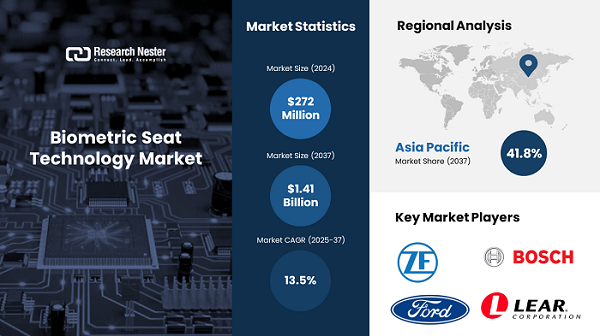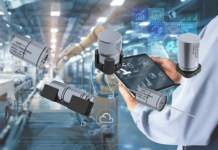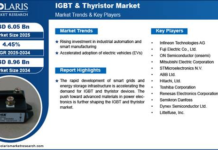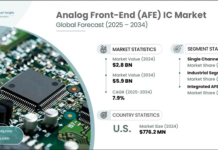
Earlier, only fingerprints, the retina of the eye, or even the face were the sources of biometric identification. Still, today all these specifications have been surpassed, and one more revolutionary upgrade has been added to the biometrics world. The automotive industry is always open to innovations to enhance both the security and comfort of consumers, and the biometric seat technology has arrived as a game-changer in the security system of vehicles. With a projection of more than 221,000 luxury vehicles to be sold, and EV sales going to exceed 20 million units by the end of 2025, biometric seat technology is going to thrive in the future.
Research Nester projects that the biometric seat technology market is going to make a whopping USD 1.41 billion in revenue by 2037. This magnificent number will be backed by the rapid breakthroughs in the field of biometric seats and the extensive adoption by various leading key players. Let’s head on to the blog further to explore what extraordinary trends are waiting for us in 2025 in the field of biometric seat technology.
3 Extraordinary Trends on the Biometric Seat Technology Market
The user-friendliness is one of the reasons why consumers choose biometrics. The biometric seats usually work through sensors that collect the owner’s or driver’s face and body data and use it for future applications. Once a person gets a biometric seat verified, there’ll hardly be any chance of car theft. But this surely isn’t it. There are many more innovations taking place in the field of biometric seat technology, and this blog will give a brief overview of that. Tech enthusiasts, go on, read the blog till the end!
1. The Incorporation of Multi-Modal Biometric System
What if somebody sits in his/her driving seat and starts honking vigorously? Yup! That is the future of the automotive world, identifying the driver with thumb impression, voice recognition, or face recognition. For example, Continental and trinamiX jointly created The Invisible Biometrics Sensing Display, which supervises the passengers’ important parameters in real-time by an invisible camera and sensor device through the OLED screen. Forvia and Smart Eye have collaborated to provide secure biometric authentication in vehicles through the use of iris scans and facial recognition technology. The companies claim it to be “world-first technology,” the biometric software utilizes existing Driving Monitoring System (DMS) cameras to facilitate customer authentication and a variety of in-car applications. The iris biometrics technology is provided by Fingerprint Cards, as part of a USD 4.5 million licensing agreement established in January. Incorporating various biometric modalities, it gives precision in security, which is going to be the primary and interesting reason behind the widespread adoption.
2. Integration of Health Supervision Through Smart Seats
Imagine a car that can measure someone’s blood sugar level immediately during driving and saves getting knocked out by another car because the driver knows how to control the sugar spike. Wow! Yes, these wow factors transform a biometric seat into a specially equipped smart seat. These seats can measure the passengers’ health signs and, at once give emergency alerts to increase safety.
A famous company, trinamiX, announced that they are going to demonstrate the Invisible Biometric Sensing Display at Auto Shanghai 2025, a revolutionary biometric system that is equipped with 3D imaging to monitor the heart rate of a driver. They can even help by 3D distance mapping, maximizing airbag deployment, and it’ll detect if somebody has fastened their seat belt or not. The company adopted a 1.5 MP near-infrared camera along with an eye-safe laser dot projector, which is integrated behind an OLED screen to support health and safety measures. This system utilizes proprietary trinamiX algorithms to analyze the reflections of light points emitted by the projector. Attention people! The seat sensor can blink suddenly, so say bye to drowsiness while driving!
3. Extensive Adoption in Autonomous and Connected Vehicles
The autonomous vehicle sales are thriving worldwide, with many leading key players such as Tesla Inc., BMW AG, Mercedes-Benz AG, Volkswagen Group, Toyota Motor Corporation, and many more coming up with new autonomous cars with advanced features. In fact, the projection demonstrates that by 2032, the autonomous vehicles industry will garner a solid USD 258.9 billion of revenue. The demand for autonomous cars increases because they provide interesting safety features. A survey by the World Economic Forum showcased that road safety continues to be one of the most urgent issues in global transportation. They also claimed that the advanced driver assistance systems and autonomous driving (ADAS/AD) have the potential to decrease the 1.2 million road deaths that happen annually.
The biometric seat plays a key role in autonomous vehicles as it supports the system of recognizing accurate passengers and drivers and provides ultimate security. These cars are often laced with various advanced features like high-speed internet connection for streaming, virtual meetings setup, and alluring entertainment choices such as virtual reality and augmented reality. Biometric seats remain connected with each one of them and sense any malfunction in these connected IoT devices, and provide safety while driving. The Ford Motor Company also submitted a patent application in 2023 for a biometric identification system that could potentially be implemented in upcoming Ford vehicles. This patent is different from the earlier ones as it is concerned more with wholesome security events like biometric seats rather than just keyless car keys.
Wrapping Up
With advancements like heart rate monitoring, fatigue detection, and 3D car mapping, the biometric seat technologies have opened a completely new avenue to the automotive industry, making it more robust and efficient. The future holds even more potential with AI-enabled technologies that provide more security and accuracy in the field of biometrics.
Source: https://www.researchnester.com/reports/biometric-seat-technology-market/7564
















